Cassini’s Greatest Hits: The Spacecraft’s Best Images of Saturn
Over a Decade In
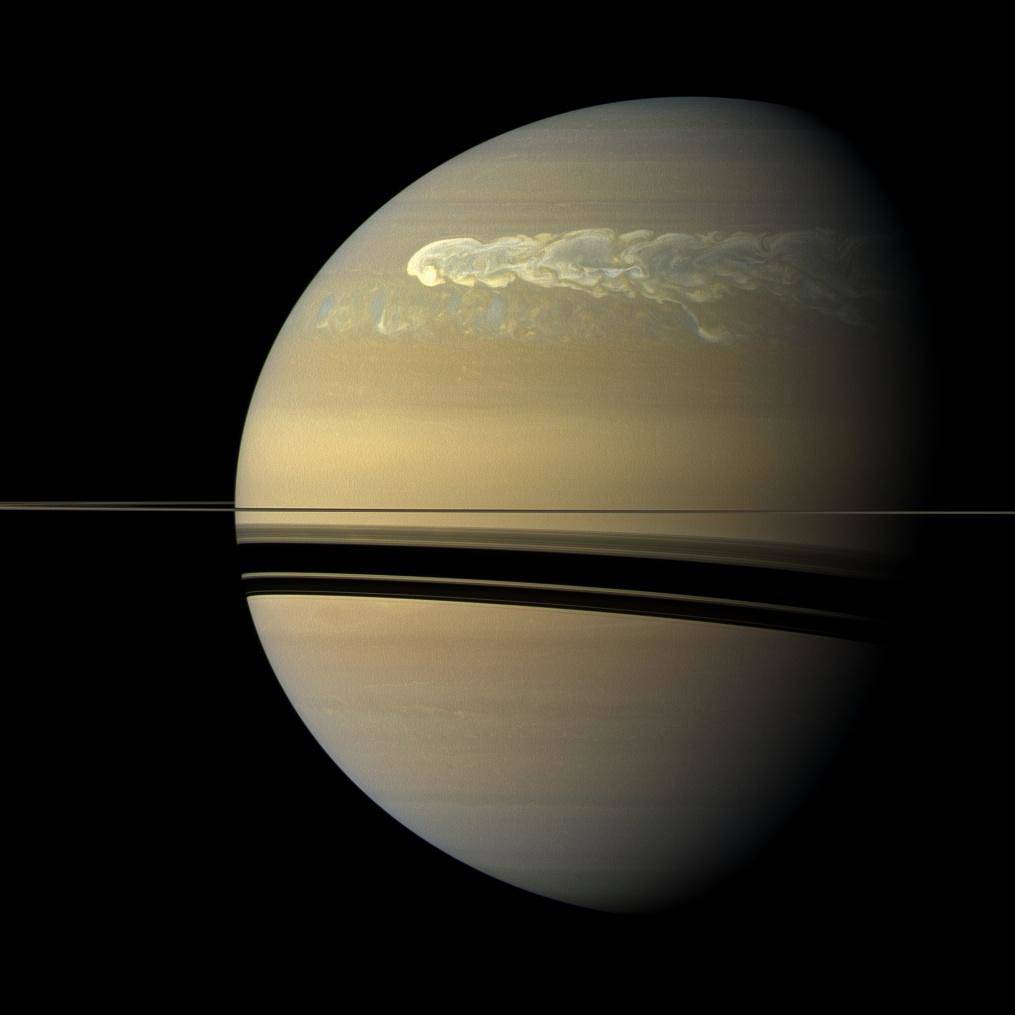
The Cassini spacecraft spent just over 13 years in the Saturn system, studying this massive, gaseous planet, its rings and its moons. Thanks to gravity assists from Saturn's moon Titan, the probe was able to change its orbit around the planet many times, and view the planet from various angles. In total, the probe sent back more than 450,000 images of the Saturn system. That's a lot to sift through, but we think these are some of the most spectacular images Cassini took of Saturn.
This image shows a huge storm churning through the atmosphere in Saturn's northern hemisphere on Feb. 25, 2011.
The Long Road
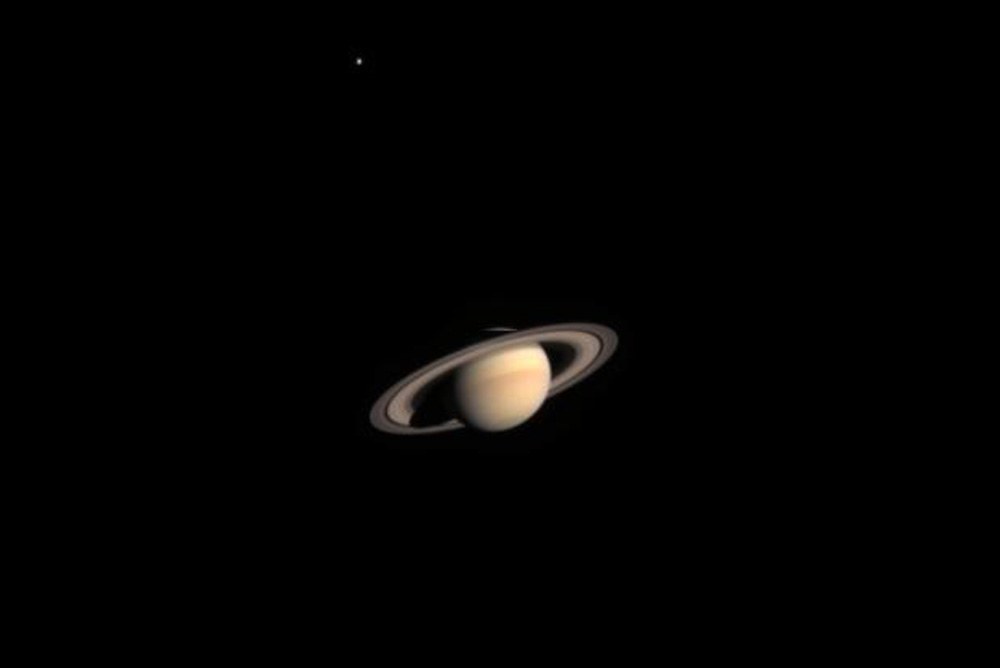
The Cassini-Huygens spacecraft took seven years to reach Saturn. This is the first color composite image of Saturn taken by the spacecraft on its approach to the ringed planet. When the image was taken, on Oct. 21, 2002, Cassini-Huygens was 20 months and 177 million miles (285 million kilometers) away from Saturn, or about twice the distance between the sun and Earth.
Almost There
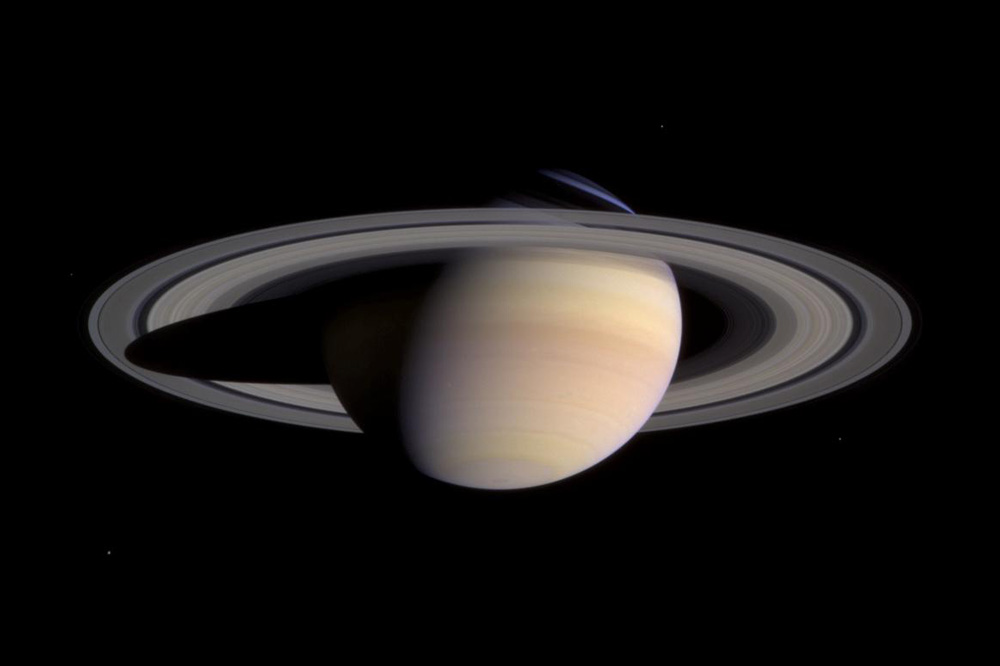
This natural-color image was taken March 27, 2004, as the Cassini-Huygens probe neared its arrival into Saturn's orbit in July 2004. This was the last image that the spacecraft's camera was able to capture of the entire planet and its ring system; after this point, the planet and its rings appeared larger than the camera's field of view.
Razor Rings
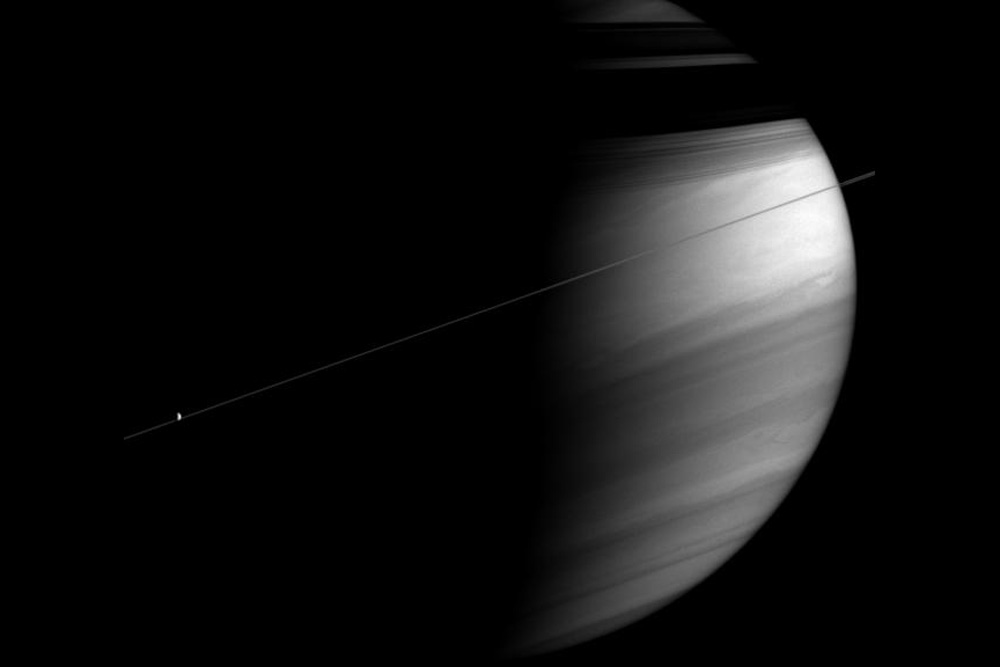
This moody portrait of Saturn shows just how razor-thin the planet's ring system is. The width of the rings can be seen in the shadows cast on the planet in the upper half of the image. The moon Dione is a tiny sunlit orb visible near the left edge of the image.
The image was taken in polarized infrared light with Cassini's wide-angle camera on Dec. 7, 2005.
Eerie Glow

Saturn is backlit by the sun in this image by Cassini. With the added background light, Cassini was able to observe the ring system in a way that wouldn't be possible from Earth.
This is not a single image but a panorama created by combining 165 images from the Cassini wide-angle camera, taken over 3 hours on Sept. 15, 2006. The original image captured ultraviolet and infrared light, and was then adjusted to resemble natural color.
Ring Spokes Revealed
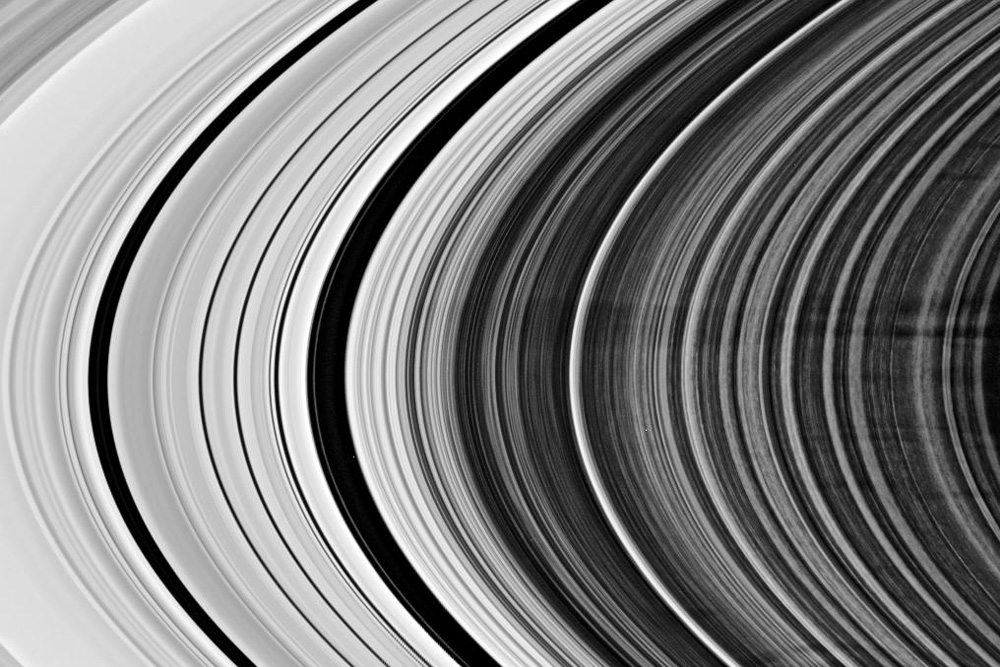
Saturn's rings appear smooth and pristine from afar, but up close, it's possible to spot imperfections. "Spokes" are gaps or smudges in the rings that stick out radially, like spokes in a bike wheel. This image from Cassini shows a group of more than a dozen spokes in Saturn's outer B ring (the darker region in the right half of the image).
The large spoke feature just above the center of the image is a grouping of spokes about 3,100 miles (5,000 km) long and 1,200 miles (2,000 km) wide. The image was taken with the spacecraft's narrow-angle camera on April 28, 2007.
Contrasting Colors
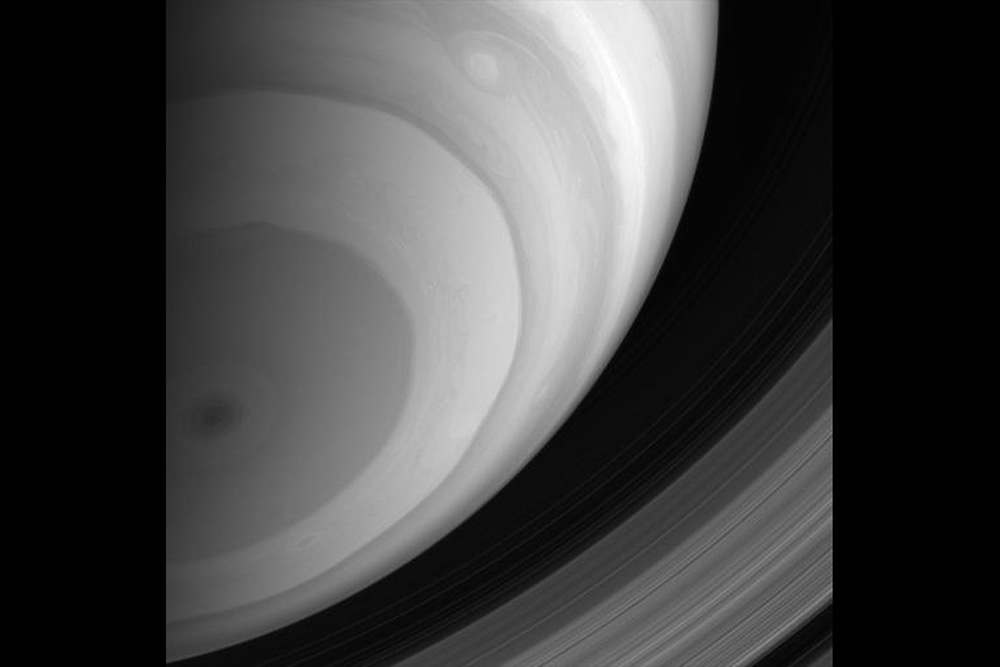
The contrasting colors of Saturn's cloud tops are apparent in this snapshot of the planet's southern hemisphere and part of the ring system. A swirling, dark storm can be seen circling around the south pole.
Get the Space.com Newsletter
Breaking space news, the latest updates on rocket launches, skywatching events and more!
Light and Dark
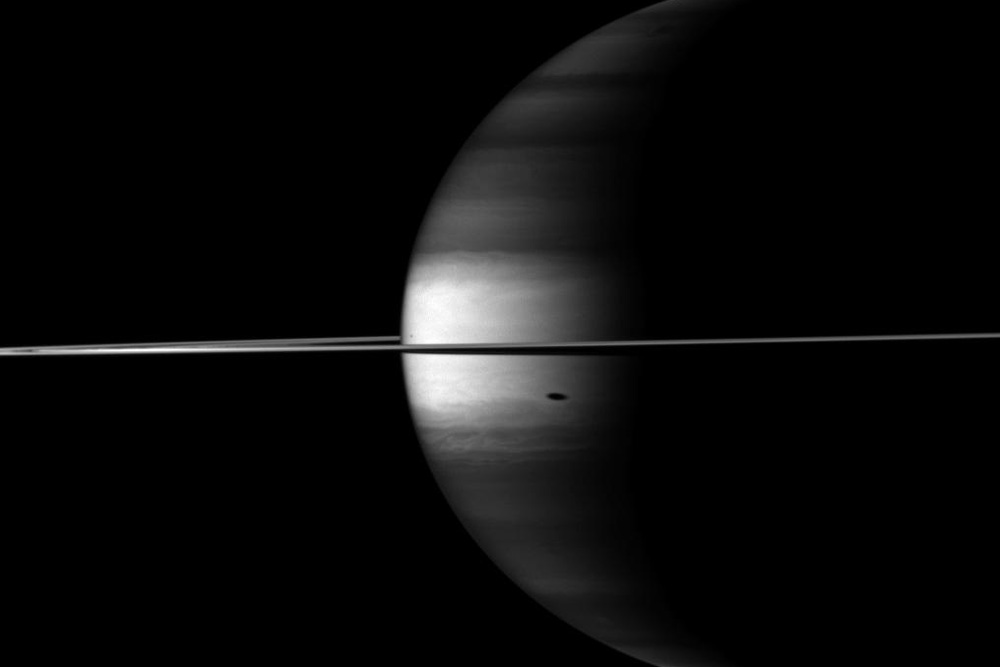
This dark and dramatic view of Saturn shows near-infrared light along the ring plane. The shadow near the equator is from the moon Tethys. A very small shadow can also be seen just north of the equator, near the curve of the planet's edge, created by the moon Mimas.
The equatorial region of the planet appears brighter than the areas near the poles because of the filter used to take the image. The filter is sensitive to light that is absorbed by methane, and the cloud tops in the higher latitudes are under a thicker layer of methane than the cloud tops near the equator. The image was taken with the Cassini spacecraft's wide-angle camera on Oct. 23, 2009.
Nightside, Dayside
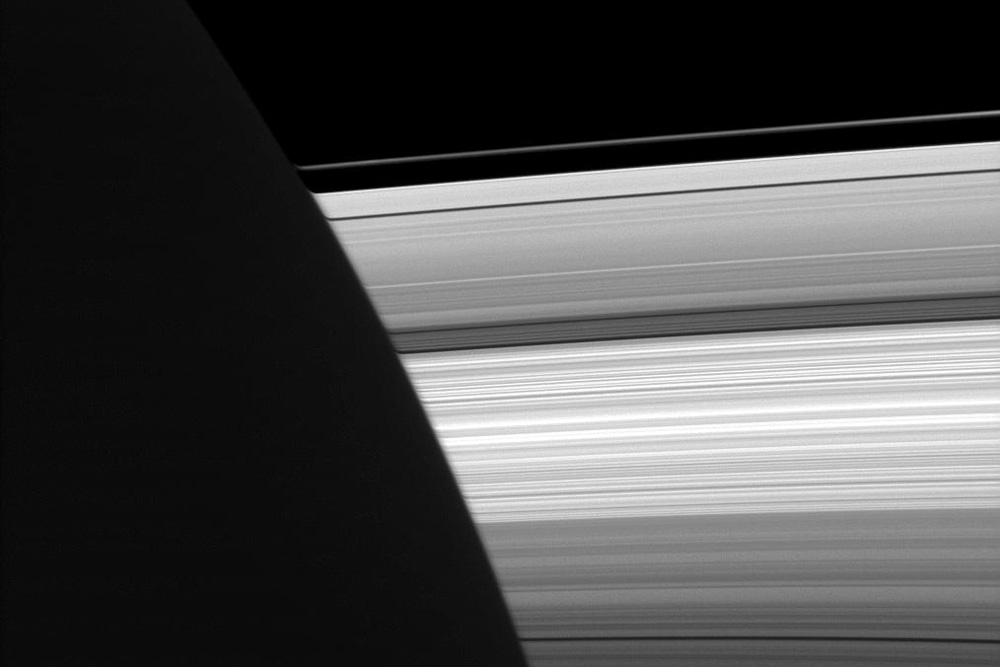
This unique view shows the nightside of Saturn but looks toward the dayside of the ring system, which appears bright. The planet's atmosphere caused a slight distortion of the light from the planet's atmosphere. A few stars can be seen in the sky near the top of the image, taken on Sept. 7, 2009.
Hidden Rings
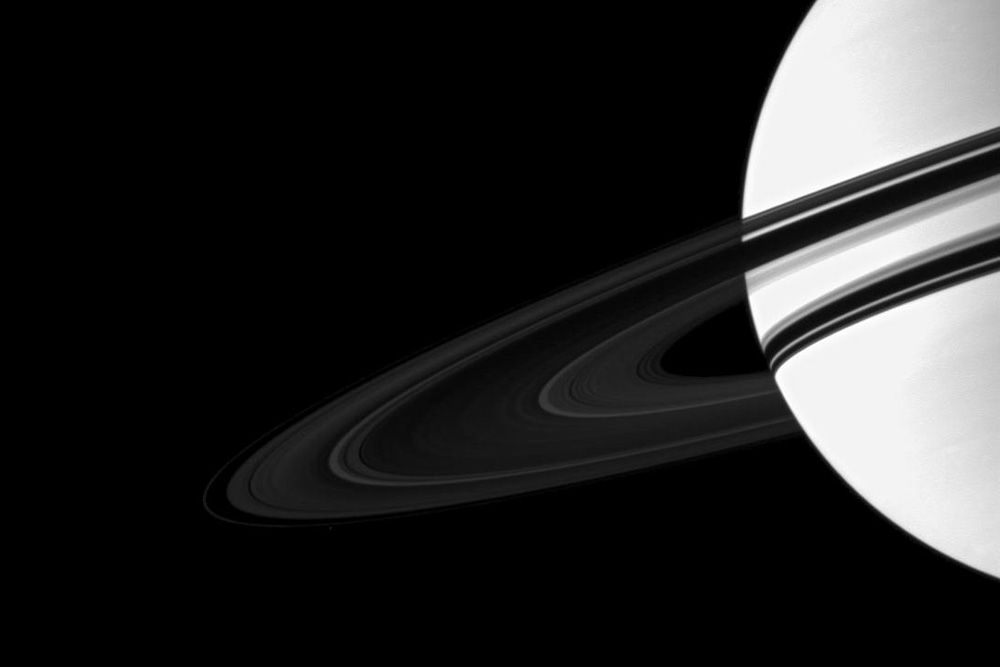
Saturn appears to be largely monochrome in this overexposed image from Cassini. The heightened contrast makes it possible to see the dim rings around the planet. The moon Pandora (below the rings to the left) was also brightened to enhance its visibility.
The size of the ring shadow on Saturn indicates the time of year. This image was taken on June 24, 2010, as the planet moved away from the August 2009 equinox, when the rings cast a very thin shadow.
Bright Spokes
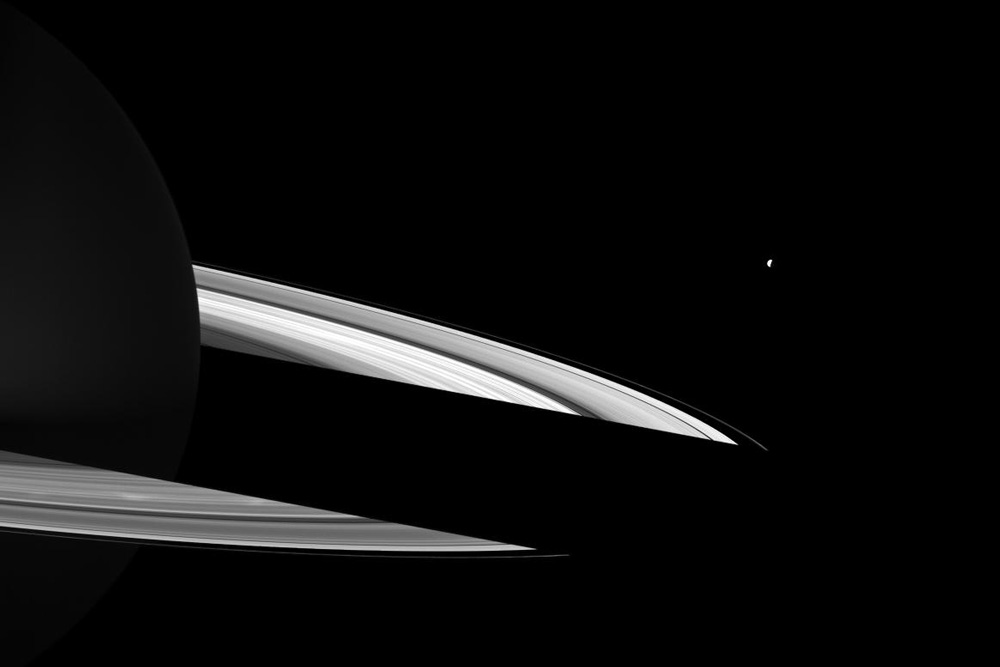
Bright spokes (distortions or smudges in the ring system) can be seen to the left of the planet's shadow, on the B ring. The moon Tethys is visible in the upper right of the image, and the moon Enceladus is at the lower right. Both moons are overexposed to increase their visibility.
Join our Space Forums to keep talking space on the latest missions, night sky and more! And if you have a news tip, correction or comment, let us know at: community@space.com.

Calla Cofield joined Space.com's crew in October 2014. She enjoys writing about black holes, exploding stars, ripples in space-time, science in comic books, and all the mysteries of the cosmos. Prior to joining Space.com Calla worked as a freelance writer, with her work appearing in APS News, Symmetry magazine, Scientific American, Nature News, Physics World, and others. From 2010 to 2014 she was a producer for The Physics Central Podcast. Previously, Calla worked at the American Museum of Natural History in New York City (hands down the best office building ever) and SLAC National Accelerator Laboratory in California. Calla studied physics at the University of Massachusetts, Amherst and is originally from Sandy, Utah. In 2018, Calla left Space.com to join NASA's Jet Propulsion Laboratory media team where she oversees astronomy, physics, exoplanets and the Cold Atom Lab mission. She has been underground at three of the largest particle accelerators in the world and would really like to know what the heck dark matter is. Contact Calla via: E-Mail – Twitter









